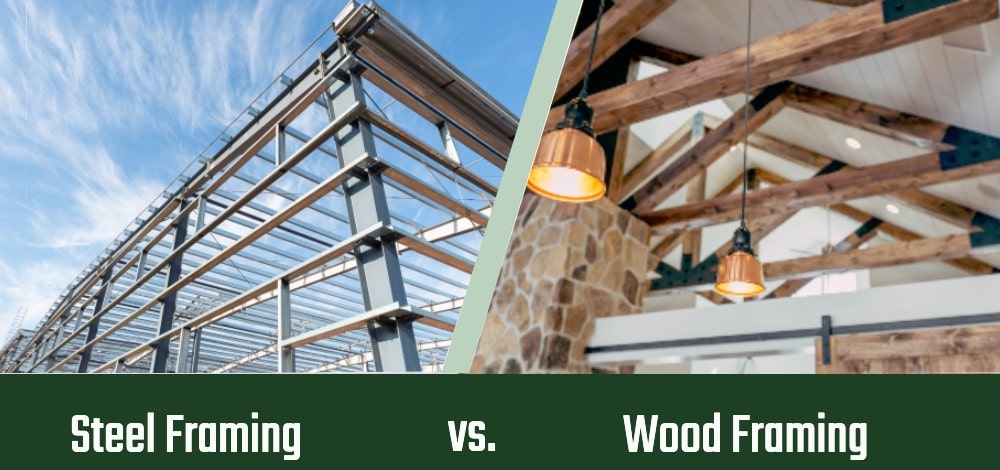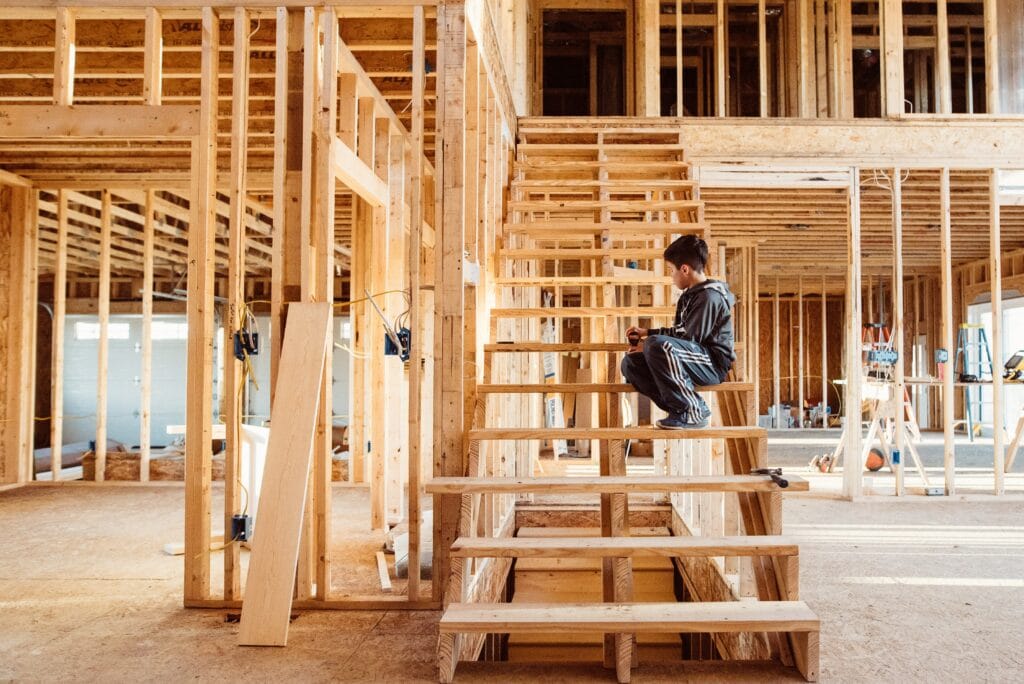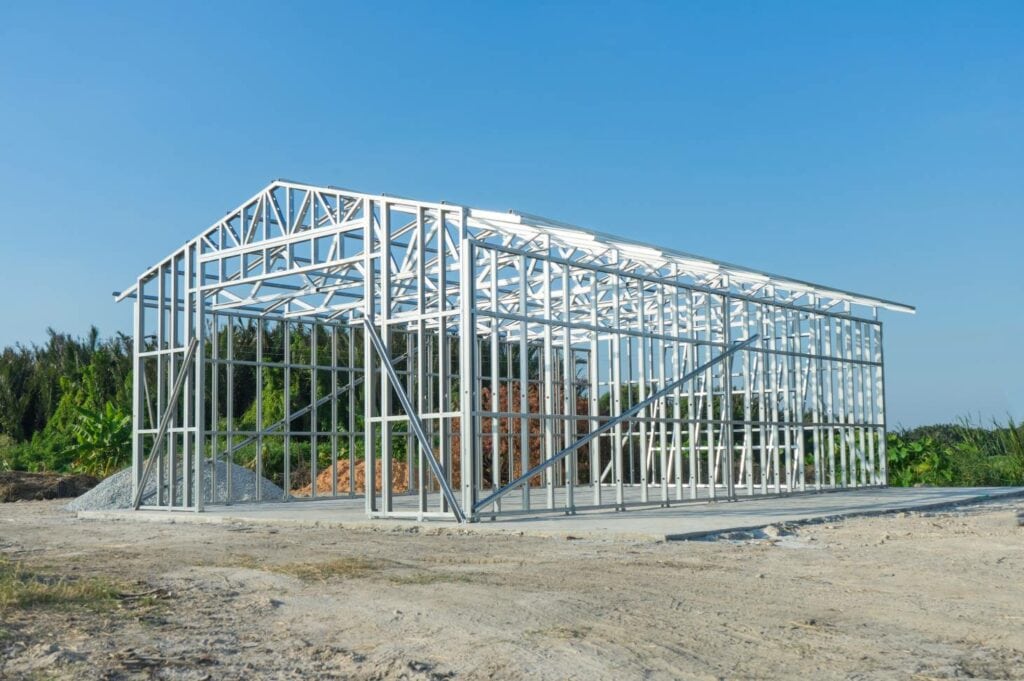Steel Framing vs. Wood Framing: Pros, Cons, & Differences
-
Pete Ortiz
- Last updated:

When you’re constructing a new building one of the biggest decisions you need to make is whether you want steel or wood framing. While wood framing is the more popular option, there are plenty of advantages of steel framing.
But what are those advantages, and which option is better for your building? We’ll walk you through the pros and cons of each option. That way, you can make an informed decision about which one is best for you!
Overview of Steel Framing

Advantages of Steel Framing
If you’re thinking about using steel framing for your building, there are quite a few advantages. First, steel is far more durable and can withstand more damage than wood. Whether it’s from a hurricane, gale-force winds, or an earthquake, steel framing simply holds up better.
Another advantage of steel is that it doesn’t burn. While contractors do their best to help keep the wood framing from becoming too combustible, wood will always burn better than steel.
Finally, not only does steel framing last longer than wood, but it also requires far less maintenance. Because of this when you look at the long-term costs of steel framing, it costs less than wood framing.
Disadvantages of Steel Framing
While there are plenty of advantages of steel framing, it’s far from perfect. One of the first problems you’ll likely run into if you want steel framing for your building is finding a contractor that has it. It’s simply far less common than wood framing, so you might need to put in a little more work to find a contractor that has it.
Moreover, steel is a great conductor. While that’s a good thing for many applications, for insulation purposes it’s a problem. Whether it’s heat or cold, it’ll pass through the steel, causing you to spend more to heat or cool your home.
Finally, while steel framing might be a more cost-effective option in the long run, it’s more expensive upfront.
- More durable
- Withstands more conditions
- Fire retardant
- Less maintenance
- Higher upfront cost
- Less insulated
- Not widely available
 Overview of Wood Framing
Overview of Wood Framing

Advantages of Wood Framing
There’s a reason wood framing is the go-to framing option for contractors. To begin with, it’s far easier for them to work with, and the material itself costs less. Both things lead to far lower upfront costs compared to steel framing.
Not only that, but wood framing insulates better than steel framing. This might not seem like a big deal at first, but when you’re comparing the monthly cost to heat or cool your home it can quickly add up.
Finally, since it’s easier to work with wood framing and it’s more widely available if you’re trying to quickly get a building up, wood framing might be the better choice.
Disadvantages of Wood Framing
Just because wood framing is more widely available doesn’t mean it’s always the best choice for your building. One disadvantage of wood framing is that while it’s more affordable upfront, it’s usually the more expensive long-term option.
That’s because wood framing requires more maintenance than other options, and over time those maintenance costs add up to more than you save with the lower initial cost. Additionally, wood framing isn’t as strong or as durable as steel framing.
If a natural disaster strikes wood framing is more likely to fail. Finally, wood burns. While it’s never the goal to have a fire in your building if you do have one steel framing holds up better.
- More widely available
- Lower initial cost
- Better insulating
- Requires more maintenance
- Higher long-term costs
- Not as strong/durable
Deciding Between Wood and Steel Framing
There’s really no right or wrong answer when you’re trying to pick between wood and steel framing, it all comes down to what you’re looking for.
Most people choose wood framing over steel framing for two reasons, it’s more widely available and it doesn’t cost as much initially. While the cost of materials fluctuates, you can expect to spend between $3 and $6 per square foot for wood framing, while steel framing can cost between $10 and $11 per square foot.
This means steel framing can cost two to three times as much initially. Of course, the trade-off is that steel framing doesn’t deteriorate or corrode as quickly as wood, leading to lower maintenance costs in the future. In the end, it’s all about evaluating your budget and needs to pick the right framing for your needs.

Factoring in Location
One area we haven’t highlighted too much when you’re deciding between wood and steel framing is where you’re at. That’s because the different weather conditions and hazards in your area can end up making a big difference.
For instance, if you live near the ocean, it can increase the likelihood that steel will rust. But if you live in a hurricane-prone area you might want the extra strength that steel offers.
This is why we can’t recommend one choice or the other for your building without knowing a little more about where you’re at and what you’re looking for.
- For extra strength and durability
- To save money in the long run
- When you have more money initially
- If you have a limited upfront budget
- For better-insulating properties
- When your contractor doesn’t work with steel framing
 Conclusion
Conclusion
Now that you know a little more about both steel and wood framing, you can make an informed decision about which option is better for your building. There’s no right or wrong choice, but both options come with their own advantages and disadvantages that might make it a better choice for you!
- Related Read: 2×4 vs. 2×6 Framing: Which Is Better?
Featured Image Credit: Left: Lightrain, Shutterstock, Right: JumpStory
Contents


 Overview of Wood Framing
Overview of Wood Framing Conclusion
Conclusion